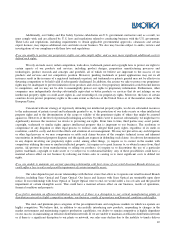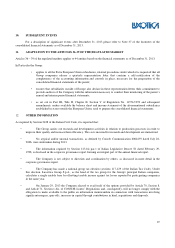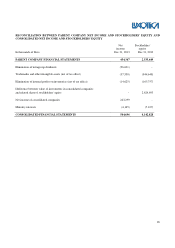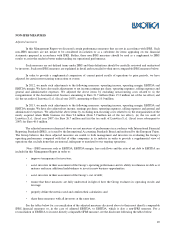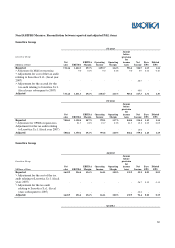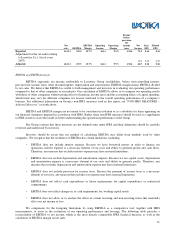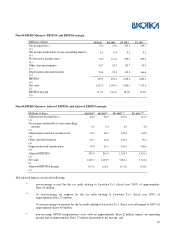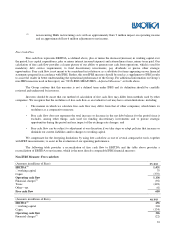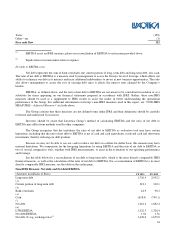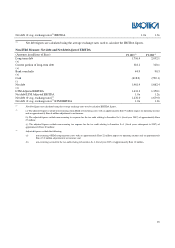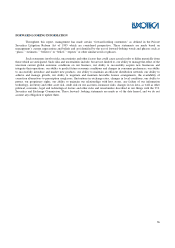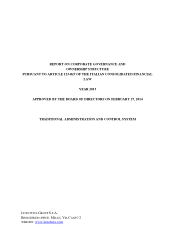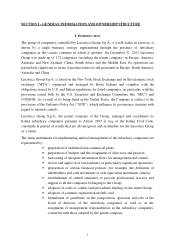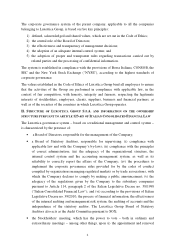LensCrafters 2013 Annual Report Download - page 36
Download and view the complete annual report
Please find page 36 of the 2013 LensCrafters annual report below. You can navigate through the pages in the report by either clicking on the pages listed below, or by using the keyword search tool below to find specific information within the annual report.
31
Net
sales
EBITDA
EBITDA
Margin
Operating
Income
Operating
Margin
Income
before
provision
for
income
taxes
Net
Income
Base
EPS
Diluted
EPS
Reported
1,632.3
255.5
15.7%
161.1
9.9%
130.4
74.9
0.16
0.16
Adjustment for the tax audit relating
to Luxottica S.r.l. (fiscal years
2007)
-
-
-
-
-
-
10.0
0.02
0.02
Adjusted
1,6
3
2.3
255.5
15.7%
161.1
9.9%
130
.4
84.9
0.18
0.18
EBITDA and EBITDA margin
EBITDA represents net income attributable to Luxottica Group stockholders, before non-controlling interest,
provision for income taxes, other income/expense, depreciation and amortization. EBITDA margin means EBITDA divided
by net sales. We believe that EBITDA is useful to both management and investors in evaluating our operating performance
compared to that of other companies in our industry. Our calculation of EBITDA allows us to compare our operating results
with those of other companies without giving effect to financing, income taxes and the accounting effects of capital spending,
which items may vary for different companies for reasons unrelated to the overall operating performance of a company’s
business. For additional information on Group’s non-IFRS measures used in this report, see “NON-IFRS MEASURES –
Adjusted Measures” set forth above.
EBITDA and EBITDA margin are not meant to be considered in isolation or as a substitute for items appearing on
our financial statements prepared in accordance with IFRS. Rather, these non-IFRS measures should be used as a supplement
to IFRS results to assist the reader in better understanding the operational performance of the Group.
The Group cautions that these measures are not defined terms under IFRS and their definitions should be carefully
reviewed and understood by investors.
Investors should be aware that our method of calculating EBITDA may differ from methods used by other
companies. We recognize that the usefulness of EBITDA has certain limitations, including:
• EBITDA does not include interest expense. Because we have borrowed money in order to finance our
operations, interest expense is a necessary element of our costs and ability to generate profits and cash flows.
Therefore, any measure that excludes interest expense may have material limitations;
• EBITDA does not include depreciation and amortization expense. Because we use capital assets, depreciation
and amortization expense is a necessary element of our costs and ability to generate profits. Therefore, any
measure that excludes depreciation and amortization expense may have material limitations;
• EBITDA does not include provision for income taxes. Because the payment of income taxes is a necessary
element of our costs, any measure that excludes tax expense may have material limitations;
• EBITDA does not reflect cash expenditures or future requirements for capital expenditures or contractual
commitments;
• EBITDA does not reflect changes in, or cash requirements for, working capital needs;
• EBITDA does not allow us to analyze the effect of certain recurring and non-recurring items that materially
affect our net income or loss.
We compensate for the foregoing limitations by using EBITDA as a comparative tool, together with IFRS
measurements, to assist in the evaluation of our operating performance and leverage. The following table provides a
reconciliation of EBITDA to net income, which is the most directly comparable IFRS financial measure, as well as the
calculation of EBITDA margin on net sales:



